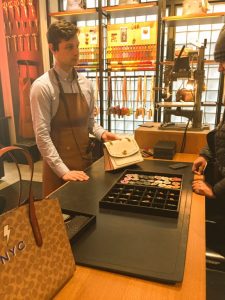Whizzing through the busy streets in Thailand, I recently discovered a new facet of the country’s shopping landscape. Sitting majestically on Chao Phraya River front, Iconsiam, a recently built mixed-use development in Bangkok was a respite after the chaos of downtown. It was not the luxury boutique brands that caught my attention here, but the brimming pop-up spaces featuring community-sourced products and the expansive market space modeled after a floating market – it had us indulged for the whole day.
The World is a New Locale
Millennials have grown up with modern retail environments, which have delivered the same expectations and given similar experiences time after time. Coming from a generation that is well traveled, they long for the sense of discovery and authenticity that comes from farmers’ and flea markets, souks or bazaars, but with a modern twist. Highly sophisticated and ultra-elegant retail environments don’t perform as well as they used to anymore.
Although the buzzword “glocal” was coined and used some years ago, it has gained new relevance in recent years. From Airbnb and home-stays, local restaurants and taverns, we are looking at companies that allow people to immerse themselves in the local culture and community as they travel, eat and shop. Retailers, too, must bring back authenticity and variety to their stores, where locals take pride in the specialty they offer, while visitors can get a “true local” experience, one that tantalizes the senses and brings the joy back to shopping.
So, the question is, why is too much curation not good for retail?
First, a majority of consumers are always in digital mode, dawdling between Instagram, Pinterest and SnapChat, and they know what’s hot and what’s not. Their journey begins way before they enter the store.
Advertisement
Thus high curation at brick-and-mortar stores deter the new, natural way in which customers shop today. Stores must create elements of curiosity, allow shoppers to hang out, introduce micro-experiences and engage them to become brand advocates. While they would love a selected assortment, it cannot be highly preset; it must allow them to explore choices, experience the “who, how and why” about the product.
Products put away like art pieces and set in a cold and structured environment don’t work anymore. This is all the more relevant in India, where we have lived in a world of bustling bazaars and markets for centuries. Here, it is all about touch-and-feel, vibrant sensorial experiences and high energy. This sensibility of a bazaar also allows customers to feel the product without any obligations to purchase.
In the recent past, many retailers and brands in India have chosen the curator-style path to elevate their brands. Transforming into luxurious gallery-like spaces, they resonate the feeling of veiled intimidation, unattainable and unapproachable places to shop. Well, it’s time for a reality check!
Relevant Realm in Retail
We love to take the jungle trails more than walking on a manicured lawn, and this reflects the customer’s mind today. They are tired of the mundane act of browsing or downloading another app to shop. That’s where physical retail can step up and serve a need, empowering shoppers and enabling them with authority over the space. Don’t tell them what they should have!
The keywords of the new realm in retail are: inclusivity, interactivity, personalization, engagement and exploration. We’re already seeing this phenomenon in established markets and through iconic labels like Gucci and even Tiffany & Co., breaking barriers where being premium is no longer synonymous with being intimidating.
Advertisement
Customers are looking for a sense of discovery and co-creation. While they will settle for mass-produced merchandise online, they expect the in-store shopping experience to be special in some way.
Today, the vital strategy is to create real spaces that tell real stories.
Architect and retail designer Sanjay Agarwal has been associated with the Indian Retail industry since 1997. Agarwal is an alumni of CEPT, Domus Academy, Milan and a fellow at CSIS, Penn University. His wide network with international design fraternity, and experience in retail design strategy and projects, led him to co-found FRDC in 2007. The award-winning design agency has now grown to become a recognized global retail brand strategy and design firm with works in India and abroad.
FRDC with its emphasis on research-led and human-centered design has built its reputation by assisting retailers and brands in realizing their full potential through a unique and compelling customer experience with cultural context. FRDC works internationally in strategic partnership with JGA, with responsibilities that include client liaison and project strategy.


 Photo Gallery7 days ago
Photo Gallery7 days ago
 Headlines6 days ago
Headlines6 days ago
 Headlines1 week ago
Headlines1 week ago
 Headlines2 weeks ago
Headlines2 weeks ago
 Headlines1 week ago
Headlines1 week ago
 Designer Dozen2 weeks ago
Designer Dozen2 weeks ago
 Designer Dozen5 days ago
Designer Dozen5 days ago
 Headlines6 days ago
Headlines6 days ago



















